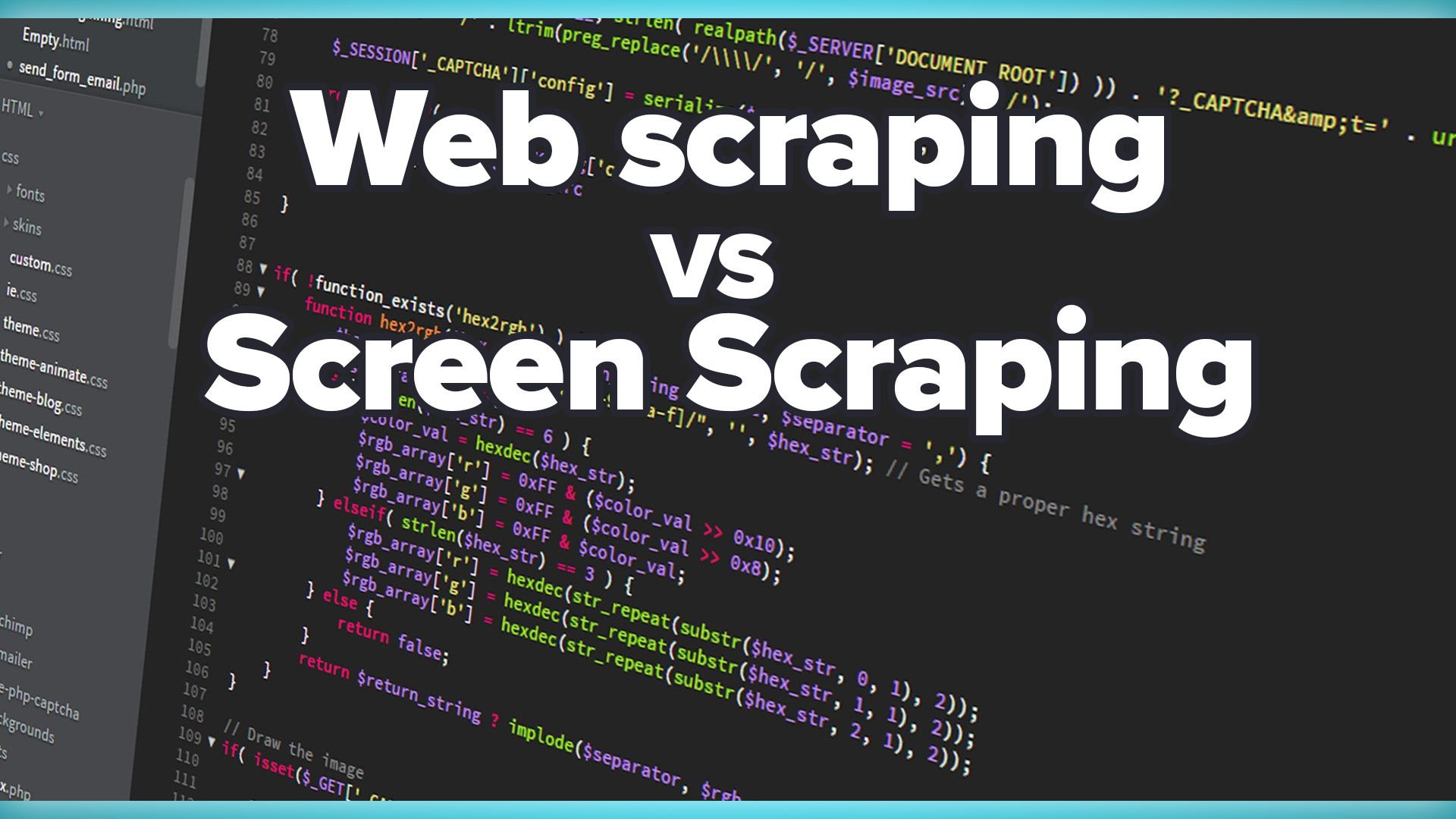Web scraping and screen scraping are two different data scraping techniques, that data scientists, marketers and business analysts will use to gather data/ information needed to help them with research, development and investment opportunities.
While both are similar, both perform different functions and will be used in different cases.
First, we’ll explain what web scraping and screen scraping is, and what’s the difference between the two.
First, let’s explain web scraping!
What is web scraping?
Web scraping refers to the extraction of data from a website. This information is collected and then exported into a format that is more useful for the user. Be it a spreadsheet or an API.
Although web scraping can be done manually, in most cases, automated tools are preferred when scraping web data as they can be less costly and work at a faster rate.
But in most cases, web scraping is not a simple task. Websites come in many shapes and forms, as a result, web scrapers vary in functionality and features.
Free Web scraping tool:
ParseHub - While there are several web scrapers available to choose from, we obviously recommend ParseHub. It’s a powerful cloud-based web scraping tool that is easy to use and has a suite of feature we think you’ll enjoy like:
- IP rotation
- Multiple export options
- Scheduling
- Many more
You can download ParseHub for free here
Now let’s get into screen scraping
What is screen scraping?
While screen scraping is similar to web scraping, screen scraping refers to the action of collecting screen display data. The process gathers screen display data from one application and transferring to another application to display it. Screen scraping is used to extract visual data for research purposes and recover data from legacy systems.
Screen scraping can be done both manually and automatically, and there are several screen scraping tools available that you can use.
What’s the difference between web scraping and screen scraping?
While both data scraping techniques generally involve extracting some sort of data from a website or application for research purposes, the biggest difference is the goal for each scraping technique.
Web scrapers can extract or parse individual data on a website, where screen scraping does not target a specific data or element. Screen scraping focuses more on the visual data that appears on a screen rather than individual elements.
Think of it as this way, say you want to extract big data sets from a website. Web scraping will allow you to extract individual elements from the page like URL, text, stats, and even the HTML code. You use screen-scraping to grab visual data that’s present on the screen like graphs and charts.
Closing thoughts
Both techniques are valuable for data scraping. Both can be used at the same time to ensure you gather the right type of data to properly do your own research. You can use web scraping to parse sets of data and grab specific elements of a website and export them into a JSON or excel file, and then use a screen scraper to extract visual data.
There are many web scraping and screen scraping tools available that can help you with your analysis and project.
If you want to learn more about web scraping, we have recently released several free online web scraping courses to elevate your web scraping skills
Happy scrapping!

